

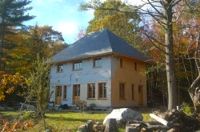
When it comes to building, we take the long view. We all need shelter. Not long ago, and for most of history, people built houses with local natural materials, mainly wood, stone and earth. Each region developed its own vernacular style in response to available materials, climate and weather. Local craftsmen relied on skills passed down from one generation to the next. Houses were built to last. They often stayed in families for generations, even centuries. They weren't traded like stocks or commodities. They were home. We build those kinds of houses -- and renovate the old ones.



We cut our frames and build our houses on the Blue Hill peninsula on the coast of Maine. Like the rest of eastern North America, New England's native ecosystem is forest. So we build with wood. But we don't see the forest as an economic resource to be exploited to the greatest extent possible. We treat it with respect, reverence even. We design and craft our buildings in a way that minimizes our impact on the land and its resources. How? We build with the materials at hand: pine, oak and spruce from the forest, granite and slate from the local geology, clay and sand from the soil underfoot. The "greenest" buildings are the ones that last the longest, so we rely on materials, techniques, and plans that have proven themselves over the centuries. We take no more from the land than we need, designing and building houses of a modest, comfortable size.
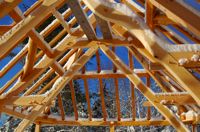
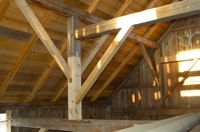

So while there's no shortage of buzz these days about new green products and technologies that promise to solve our rapidly escalating crises of the economy and environment, we think a way of building that takes no more from the land than it gives back—the only definition of sustainable that actually means anything—requires more than a change in our shopping habits. It requires a change in our habits of thought and culture. Our approach to building begins with the premise that to settle the land in a way that doesn't degrade or destroy it means first giving up the frontier speculators' mistaken notion that the land and everything on it belongs to us, and adopting the native view that it is we who belong to the land.

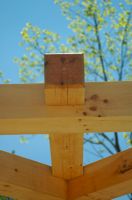
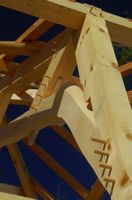
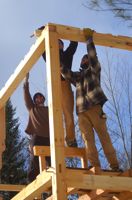
We've distilled this ecology of building into a set of principles that animates our work:
❧ Build for deep beauty in the structure, materials, and craftsmanship.
❧ Build houses to last centuries, not decades.
❧ Minimize heating and cooling costs with passive solar design, thermal mass, and super-insulated walls and ceilings.
❧ Draw designs from vernacular traditions.
❧ Use local, natural materials, mostly wood, stone, earth, and straw.
❧ Build small.
❧ Create a healthy, safe, non-toxic living space.
❧ Rely on local skills and creativity instead of energy-intensive industrial processes.
❧ Make buildings easy to maintain and alter using traditional tools and skills.
❧ Honor the landscape and local ecology.
❧ Waste nothing.
To see examples of how these principles translate into the various elements of a building, click on the menu items to the right or contact us by phone or e-mail.
A building, like
any other work of fiction, should have magic in
it.


